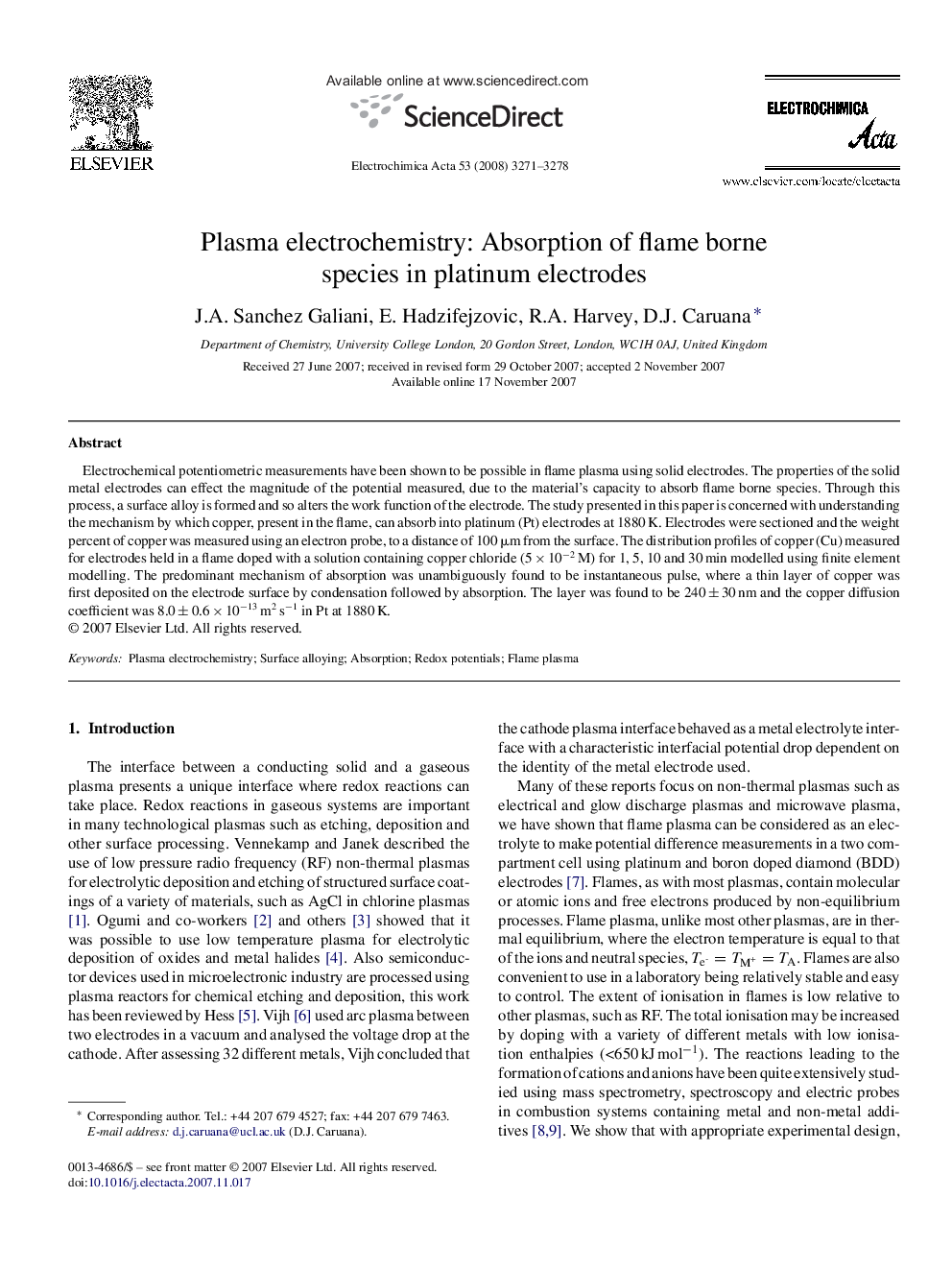| Article ID | Journal | Published Year | Pages | File Type |
|---|---|---|---|---|
| 192675 | Electrochimica Acta | 2008 | 8 Pages |
Electrochemical potentiometric measurements have been shown to be possible in flame plasma using solid electrodes. The properties of the solid metal electrodes can effect the magnitude of the potential measured, due to the material's capacity to absorb flame borne species. Through this process, a surface alloy is formed and so alters the work function of the electrode. The study presented in this paper is concerned with understanding the mechanism by which copper, present in the flame, can absorb into platinum (Pt) electrodes at 1880 K. Electrodes were sectioned and the weight percent of copper was measured using an electron probe, to a distance of 100 μm from the surface. The distribution profiles of copper (Cu) measured for electrodes held in a flame doped with a solution containing copper chloride (5 × 10−2 M) for 1, 5, 10 and 30 min modelled using finite element modelling. The predominant mechanism of absorption was unambiguously found to be instantaneous pulse, where a thin layer of copper was first deposited on the electrode surface by condensation followed by absorption. The layer was found to be 240 ± 30 nm and the copper diffusion coefficient was 8.0 ± 0.6 × 10−13 m2 s−1 in Pt at 1880 K.
